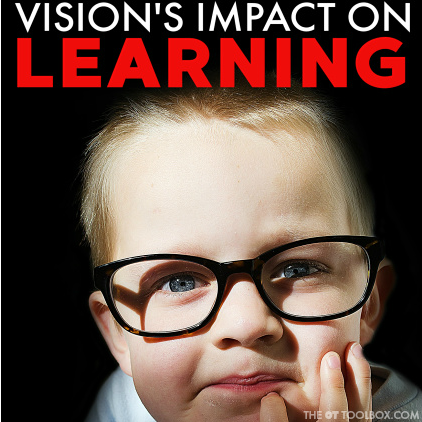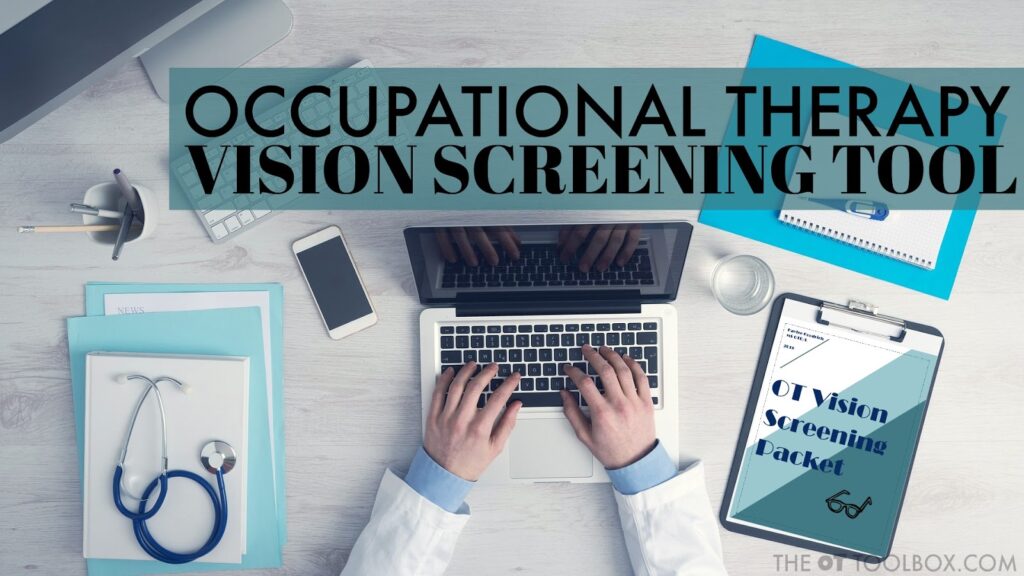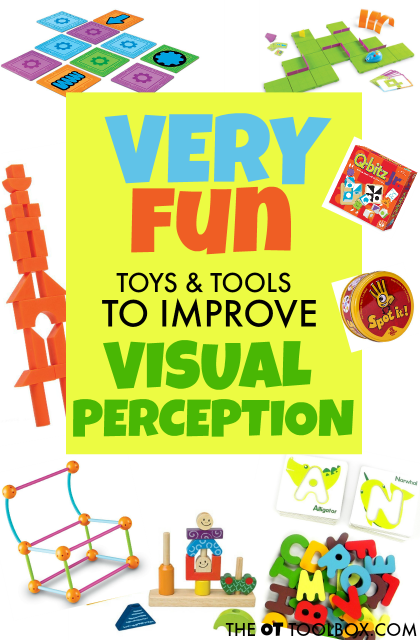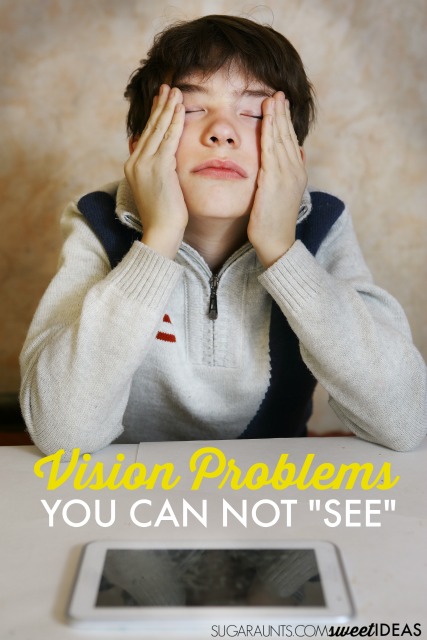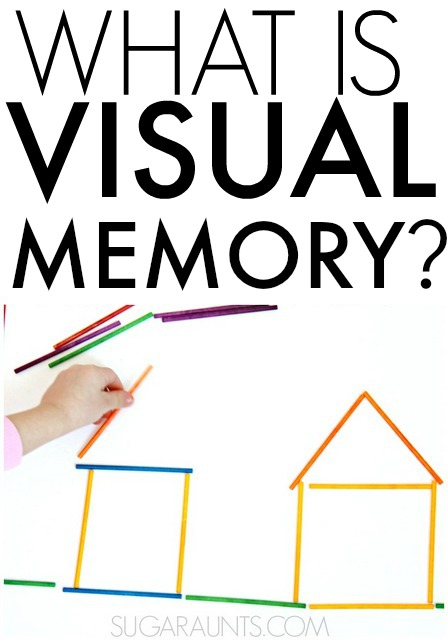Did you know that vision and learning are closely related? It’s true! Vision problems impact learning in a big way. Here, you’ll discover how vision problems impact learning for children. With a new school year, it’s time to start thinking about kindergarten screenings, screenings for vision problems, and wondering how previously struggling kids will do in the next academic year. One of the largest challenges facing some of these kids may be unidentified vision problems. Read more to learn about how vision problems affect learning.
Typical vision screenings given by the pediatrician or school nurse test for acuity only. They do not look for any other underlying vision problems that a child may be experiencing that is hindering their overall development in reading and writing.
You’ll also want to check out these specific scanning activities for reading.

What You Need to Know About Vision Problems and Learning
There are many causes of learning difficulties that a child may present with. However, the following list of difficulties may indicate underlying vision problems and the need for a more in-depth vision screening.
Learning Difficulties Implying Underlying Vision Problems
* Reversals
* Difficulty with handwriting
* Poor reading comprehension
* Difficulty copying from the board
* Difficulty transferring information from one page to the next
* Frequent falls or walking into things
* Difficulty spelling
* Difficulty with letter and number recognition
Vision is More the 20/20
Vision is more than 20/20 acuity. It is the ability to move your eyes with smooth, coordinated and controlled movements. These movements can be broken down into tracking (pursuits), depth perception, teaming, saccades, convergence/divergence and nystagmus. When these skills are impaired, learning difficulties will arise.
Here is more detailed and specific information related to saccades and their impact on learning.
Common Vision Problems that Impact Learning
These visual processing skills are essential to learning:
Tracking– Visual Tracking is the ability smoothly follow an item with your eyes while in a stabilized position. A child with tracking difficulties may be unable to dissociate their eye movement from their head, be unable to maintain visual focus on the target, or “skip” or “jump” when crossing midline. These patterns indicate difficulties with tracking that may hinder the development of reading skills. Read more about visual tracking here.
Teaming– Teaming or binocular vision, refers to the ability to move both eyes in a controlled, coordinated fashion. Children with teaming difficulties also frequently have trouble with reading, along with letter and number recognition. This vision difficulty can be hard to see during a screening, as it is related to an eye muscle imbalance that may be slight, or due to fatigue during longer activities. However, teaming difficulties should be considered if the child is having tracking difficulties, as tracking and teaming skills play into one another.
Depth Perception– Depth perception helps us to know where we are in relation to items in the world utilizing our visual system. Children with depth perception difficulties frequently fall, have difficulties with catching a ball (early closure of hands, or fail to catch at all), poor righting reactions and reflexes and frequent tendencies to readjust their bodies in relation to their work space.
Saccades Saccades is the ability to quickly look between a set of objects without losing focus. For children with difficulties with saccadic movements reading is a significant challenge. They frequently lose their place, are unable, to keep up or experience eye muscle fatigue and headaches.
Convergence/Divergence- Convergence is the ability to track an object from a distance into near point range with smooth movements. Divergence, is the opposite. It is the ability to track an object smoothly from near to far. Deficits in these skills often lead to difficulties with near and far point copying tasks. The child may skip lines, letters or even whole words with deficits in this area.
Nystagmus- Nystagmus is a visual response to circular vestibular input. After being spun, one’s eyes should oscillate before returning to a normal resting position. When a child does not have a nystagmus response, it can be an indicator of a vestibular deficit. However, in this post, if a nystagmus pattern is noted at rest without input, is abnormal and results in lowered overall vision.
Related Read: Need help addressing visual problems in the classroom? Here are classroom accommodations for visual impairments.
Screening for Visual Problems
Screening for vision problems is an integral part to addressing visual motor integration concerns for school aged children. A simple screen during an OT evaluation can help make the difference in success or continued struggles with development, reading and writing.
What to Look for In Vision Screenings
A variety of simple tools can be utilized to complete screenings.
These tools include 2 pens or pencils with a fun end such as a character or cool eraser, H and X patterns, and ZigZag Patterns. H and X patterns look at tracking, while the ZigZag pattern looks at saccades, convergence/divergence.
The ZigZag Pattern is a series of movements that are not ZigZags, but were designed to be a fun way to explain to kids what you want them to do. Especially, as these movements are often difficult for them to complete resulting in frustration and non-compliance at times.
Screening for Visual Tracking
H and X Patterns When screening for tracking I tell the child that we are going to make H’s and X’s with our eyes only. It’s a fun way to engage the kiddo in a task that may seem challenging to them.
Have the child follow the tip of a pen or pencil approximately 12 inches from the face in an H and X pattern moving slowly. You are looking for smooth, controlled movements. Note any abnormal movements such as jumping, skipping or ticks. If the child is having a difficult time with following directions, complete the H and X patterns several times to get the best picture of the child’s skills.
Don’t forget to note if the child was unable to move his eyes in dissociation from his head/ body. This is a tell tale sign of a vision deficit.
Screening for Visual Saccades
“Zig” Pattern The “Zig” portion of the pattern assess saccadic movements. Hold 2 pens/pencils approximately 12 inches from the face, and 6 inches apart. Ask the child to look between the two items as fast as they can.
A child with difficulties with this skills will demonstrate slow, uncoordinated movements, attempt to move their head or say that they can’t do it.
Screening for Convergence Insufficiency or Divergence
Convergence/Divergence: “Zag” Pattern: The “Zag” portion of the pattern assesses convergence/divergence. Have the child watch the end of the pen/pencil all the way into their nose, and back out again.
Children with difficulties with convergence typically are unable to make their eyes move in towards their nose, or demonstrate jumping or extropic movement of one eye. The child may also be unable to remain in convergence for more than a few milliseconds before returning to a neutral position.
Difficulties with divergence are a little more difficult to spot. The child will typically have difficulty coming out of convergence with smooth movements, or may demonstrate one eye remaining in convergence before moving into a divergence pattern. The transition may also be uncoordinated and lack fluidity.
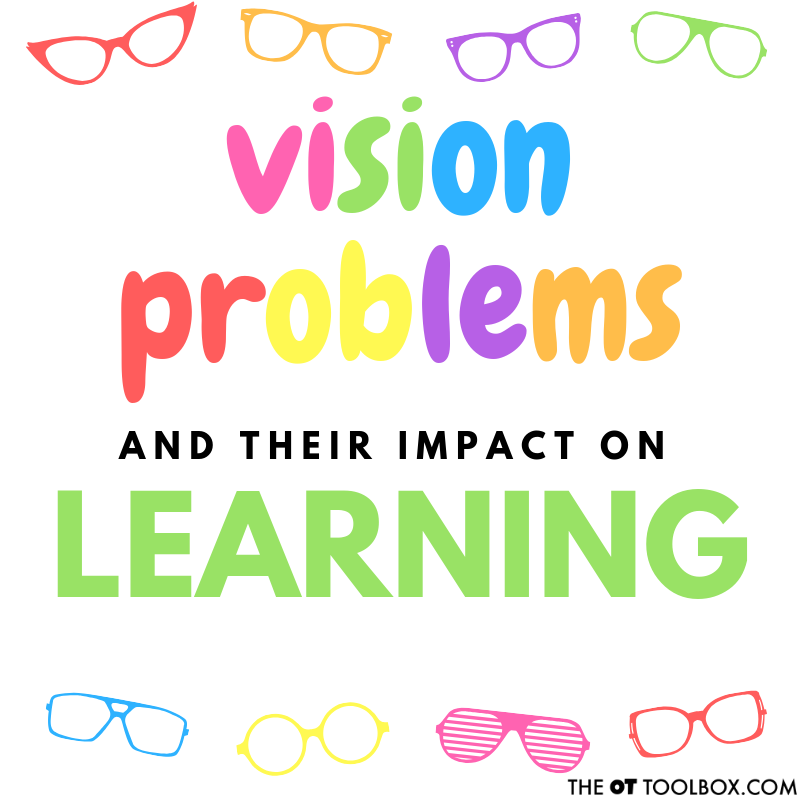
What if you suspect vision problems?
Now what? When vision problems are suspected after a screening by the OT, it is best practice to refer the family to a developmental optometrist.
A developmental optometrist will complete a full evaluation and determine the need for corrective lenses, vision therapy or a home program to address vision concerns.
As occupational therapists, it is imperative that we rule out vision problems before treating handwriting or delays in visual motor integration, to ensure the best possible trajectory of development and success for the child.
Occupational Therapy Vision Screening Tool
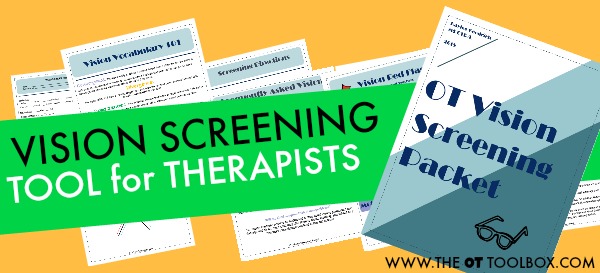
Looking for more information on visual problems and learning? Try these resources:
 A little about Kaylee:
A little about Kaylee: 